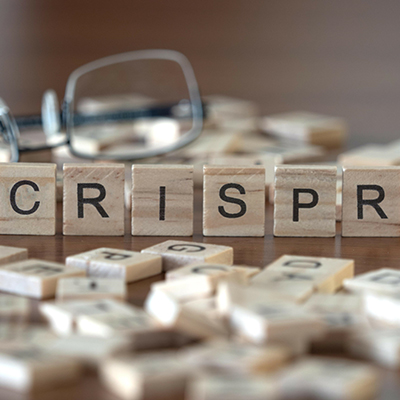April 10, 2023 -- Scientists have modified the synthetic guide RNA (gRNA) that enables CRISPR-Cas gene editing to make the process safer for use in humans.
CRISPR gene editing, which typically uses the Cas9 nuclease to cut DNA, equips researchers to develop drug candidates that modify genes associated with human diseases. Whether used to edit cells ex vivo or human DNA in vivo, the approach has the potential to facilitate genetic modifications that correct the root causes of an array of serious health conditions.
However, there is also potential for the treatments to harm patients. CRISPR-Cas gene editing can cause mutations and off-target effects that are deleterious for patients. Off-target effects happen when the Cas enzyme acts on healthy sections of DNA that are similar to the target site. The alteration of genes can also cause changes at the chromosome level. Both problems can have severe consequences, including death.
Writing in Nature Biomedical Engineering, researchers at Kyushu University and Nagoya University School of Medicine in Japan speculate that some of the mutations stem from the editing activity of Cas9. The theory is that the enzyme's high editing activity can cause excessive DNA cleavage and thereby drive some of the side effects associated with the use of CRISPR-Cas.
To test the theory, the collaborators evaluated the activity of Cas9 for each chromosome. The analysis confirmed the high editing activity, leading the researchers to try to modify the gRNA to suppress the level of cleavage. The process found that adding an extra cytosine extension to the 5' end of the gRNA gave the researchers greater control over DNA cleavage.
Having discovered the modification, which they called safeguard gRNA ([C]gRNA), the scientists ran tests in mice to evaluate the effects on the safety of gene editing. In a mouse model of fibrodysplasia ossificans progressiva, a rare connective tissue disease, the researchers used patient-derived induced pluripotent stem cells to correct the condition. The treatment was able to modify a single nucleotide in the allele that causes the disease.
"For techniques that use Cas9 to activate or repress genes of interest, such as CRISPR activation and CRISPR interference, excessive induction or suppression of gene expression may be not useful and even harmful to cells. Controlling expression levels by [C]gRNA is an important technology that can be used for various applications, including the implementation of precise gene therapy," Nagoya University's Professor Hiroshi Suzuki said in a statement.
The team, which is planning to commercialize the technology, created a mathematical model to show the correlation between genome-editing patterns and Cas9 activity. The model is designed to enable researchers to simulate the results of genome editing and determine the optimal Cas9 activity in silico to save resources.
Copyright © 2023 scienceboard.net









